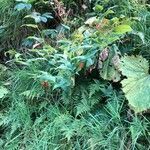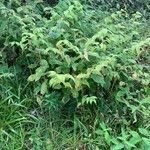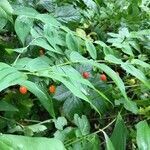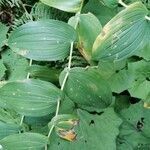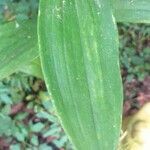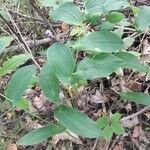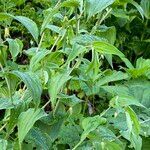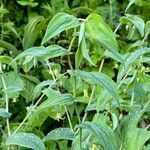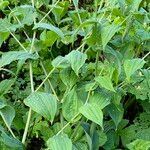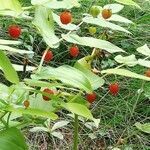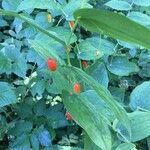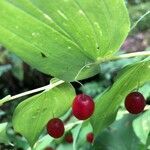Plants from thick rhizomes. Stems freely branched, stout, 5–12 dm, often with reddish hairs basally, nodes not fringed. Leaves 5–15 × 2.5–6 cm; blade ovate-oblong to oblong-lanceolate, base cordate-clasping, apex acuminate; peduncle: junction with pedicel abrupt, with glands indicating transition, entire structure 2–5 cm, glands short-stalked. Flowers 1–2 per axil; perianth campanulate; tepals spreading, recurved at tips, white to greenish yellow, narrowly oblong-lanceolate, 9–15 mm; stamens unequal, outer shorter, 0.8–1 mm, inner 2–3 mm; anthers lanceolate, 3–3.5 mm, apex 1-pointed; style stout, 4–5 mm; stigma fused from base to tip, unlobed; combined peduncles and pedicels recurved, 2–5 cm, short-stalked glands indicating transition; pedicel sharply geniculate, glabrous. Berries whitish green maturing to yellowish orange or red, ellipsoid, 10–12 mm. Seeds 2.5–3 mm. 2n = 16, 32.
More
A herb that keeps growing from year to year. It has a short, fleshy underground stem. It grows 25-90 cm high. There are several leaves. They are at the base and grass-like. They are 5-20 cm long. The flowers are white and small. They are in dense clusters or spikes at the end of the stem. They hang on delicate, twisted stalks. The stem is sticky. The fruit is a yellow or orange capsule. It has many seeds.
